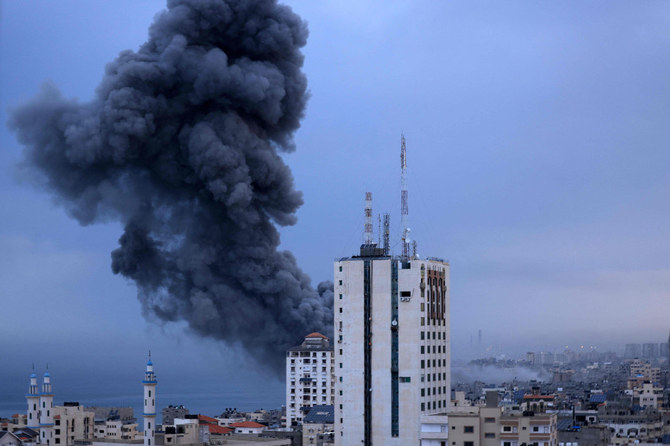
A glance at the map of Jewish settlements in the West Bank and East Jerusalem will leave anyone who believes in a two-state solution disheartened. The conventional wisdom is that the presence of 400,000 settlers in 129 settlements and 101 outposts in the West Bank, and an additional 200,000 in 12 neighborhoods in East Jerusalem, renders a contiguous independent Palestinian state impossible. However, as in most issues in this complex conflict, even this assertion divides opinion.
There are three important elements whose interplay sways opinion one way or another. One is the sheer number of settlers, and although in the West Bank they are no more than 12 percent of the population, they are aggressively and vocally represented in the Knesset and the Cabinet. The second element is the geographical location of these settlements.
Several, including the more populated ones, are close to the Green Line, and dozens of smaller ones are scattered across the West Bank. There is also the aspect of their socio-economic-ideological makeup. More are there for economic reasons than for Zionist-messianic or extreme right-wing nationalist beliefs. If and when serious and genuine peace negotiations are to resume, all these factors have to be taken into account.
An analysis by the Israeli newspaper Haaretz concluded that the removal of no more than 9,800 families, 46,000 people, would allow for a contiguous functioning Palestinian state. That is in principle correct, but it is wishful thinking to suggest that it would be enough for an agreement and that the removal of these more isolated 33 settlements is achievable.
At no point in past peace negotiations was there an expectation that all, or even most, settlements or settlers would be removed in order to reach a final status agreement based on two-state solution. However, the removal of only the smaller isolated settlements would leave big settlements deep inside a Palestinian state, connected to Israel by what the authors of the report call “arms.” These create enclaves that cut straight into the center of a Palestinian state, simply for Israel to ensure its territorial contiguity with the settlements of Ariel and Kedumim; and a third that leads from Jerusalem to Ma’aleh Adumim, Gush Etzion and Beit El to the east, south and north of the city.
Tempting as it is to suggest ‘lopping off’ these arms and evacuating less than 8 percent of settlers to remove one the major obstacles to a peace settlement, that would be no more than well-intentioned clutching at straws. As the author of the report himself admits, it will not meet the Palestinians’ needs, or their conditions for ending the conflict.
At best it might lead to an interim agreement, but the Palestinian people no longer have any trust in interim agreements. They have been party to several in the past 25 years, only for the “interim” to become long-term reality. For sure, they might end up with a state, borders, and seat in the General Assembly, but also with the vast majority of settlers still living on their occupied territory, and no closure.
A glance at the map of Jewish settlements in the West Bank and East Jerusalem will leave anyone who believes in a two-state solution disheartened.
Yossi Mekelberg
This proposal also ignores the history of evacuating settlements and the resistance that it has provoked. In 2005 a mere 8,000 Jewish settlers were evacuated from Gaza and four settlements in the north of the West Bank. The process sucked the energy out of Israel’s political system, and even such a bulldozer-like prime minister as Ariel Sharon, with his strong right-wing credentials, struggled to accomplish it. To succeed today, it would take a determined leadership capable of building a strong coalition around the proposal, and one that was absolutely convinced it would serve their personal and political interests. This is not how one would portray the current Israeli leadership.
The report does find that population growth in the more isolated settlements is low, which is encouraging, but these are the settlements most supported by the most vociferous elements in Israeli politics and their representatives in the legislature and around the Cabinet table. Benjamin Netanyahu, despite his tough rhetoric, is risk-averse.
Unless he is indicted and convicted on any of the corruption allegations he is being investigated for, a process that could take years, he seems to be the prime minister Israel wants, and he stands a good chance of forming a government after the next elections too. And we should not forget that he has previously demonstrated his preference for the religious and extreme right-wing parties when it comes to choosing coalition partners; when he had an opportunity to form a peace coalition with the Labor party in 2016, he got cold feet at the last minute.
Lastly, while the settlers in the big blocs are there mainly for economic reasons and on the whole have a more pragmatic nationalist approach, many of the suggested 33 settlements comprise hardcore messianic-nationalists who will not leave their homes without a fight, and may even present armed resistance. This monster created by successive Israeli governments is difficult to contain, and even more difficult to remove.
To achieve peace by removing such a small proportion of the settler population is a nice dream, but the peace camp in Israel need not fall for this type of fantasy. A genuine two-state solution would require either a substantial evacuation of settlements and settlers, or a paradigm shift to a more confederal arrangement.
Yossi Mekelberg is professor of international relations at Regent’s University London, where he is head of the International Relations and Social Sciences Program. He is also an associate fellow of the MENA Program at Chatham House. He is a regular contributor to the international written and electronic media. Twitter: @YMekelberg
Disclaimer: Views expressed by writers in this section are their own and do not necessarily reflect Arab News" point-of-view












